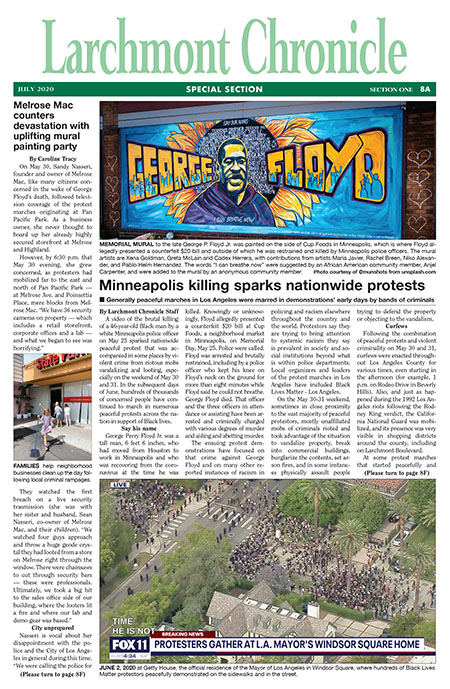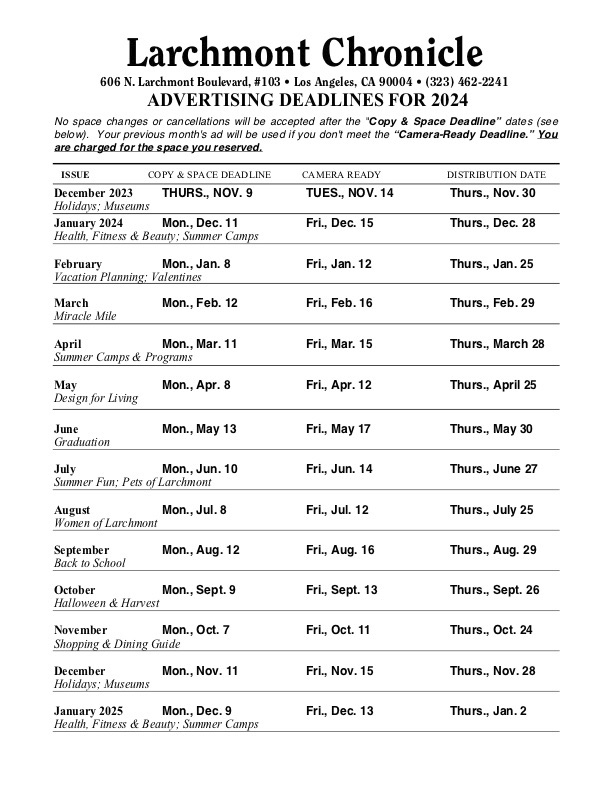Look for signs indicating your tree could be suffering
If a tree falls in the forest and no one is around to hear it, does it make a sound? That’s up for debate. But if a tree falls on 4th and June, it certainly makes a sound you’ll hear about… all the way from Hancock Park to Windsor Square.
That’s exactly what happened in September when a 50-foot tall stone pine tree went down in a great timber tragedy.
Fortunately, the only living thing the behemoth took out when it fell was the fungus found in its roots.
It’s hard to determine why healthy mature trees fall, but the drought is certainly adding stress to California’s landscape. Saving water is on everyone’s mind. Now, you’ll need to add saving trees to the list.
Irrigate your trees
It’s been four years since L.A. trees got their fair share of rain water. It‘s time to give your tree a drink.
First, check to see if your tree needs water. Dig down about 18 inches. If the soil is moist, great. If it’s bone dry, follow the next step. For an inexpensive method, place a soaker hose in concentric circles around the tree. The water hose should be at least a foot from the tree trunk and extend as far out as the canopy.
For a permanent but more expensive method, install drip line irrigation around the tree. Again, don’t place the line too close to the trunk, it’s the tree roots that need the water and they spread far in the underlying soil.
Mature trees will only require periodic watering. A good rule of thumb is to let the soaker hose or drip line run about one hour once a month. Some trees, like magnolias, require more water than California natives and will need more frequent irrigation.
Inspect your trees
It’s rare that a tree topples without first giving signs of distress. Check your tree for the following:
Tree is leaning: Yikes, this is bad especially if the earth is bulging on the opposite side of the lean. This suggests attenuated roots. The fix: prune to release pressure and call an arborist ASAP.
Leaves are turning brown or falling off at branch tips: The fix: irrigate and prune. If it looks like an entire branch is dying, don’t wait until it falls off, get an expert’s help immediately.
Split trunks: A tree with more than one trunk has a greater risk of snapping. The fix: support the trunks with metal wiring and keep well pruned.
Insect infestation: Insects find it easier to bore into live trees if the sap is dry. The fix: call an arborist. According to The California Dept. of Forestry and Fire Protection, bugs can turn a tree from green to brown in three to four weeks.
Avoid digging near trees
The drought is taking a toll on California trees, but human impact is still a significant factor. If tree roots are already compromised by the drought, they are more vulnerable to being dug up or being covered by impermeable materials like concrete.
If you are planning a project be sure to consider trees long before you begin. The tree should be in good health before the surrounding area is tampered. It could save you money and heartbreak down the road.
Tree Stewardship
A tree can take more than 100 years to reach its majesty. Like Rome, it wasn’t built in a day. But forces big and small can deftly bring about the decline and fall of a tree with one snap.
Even if you didn’t hear the sound of the tree falling on 4th and June, you should hear its warning.
By Renee Ridgeley
California Greenin’
Category: Real Estate








